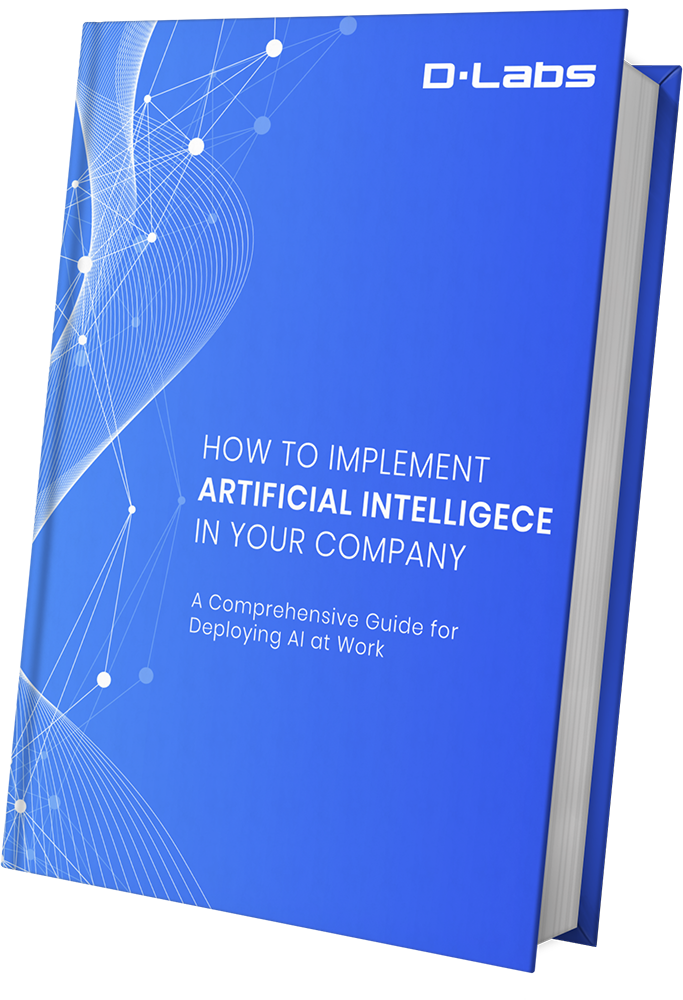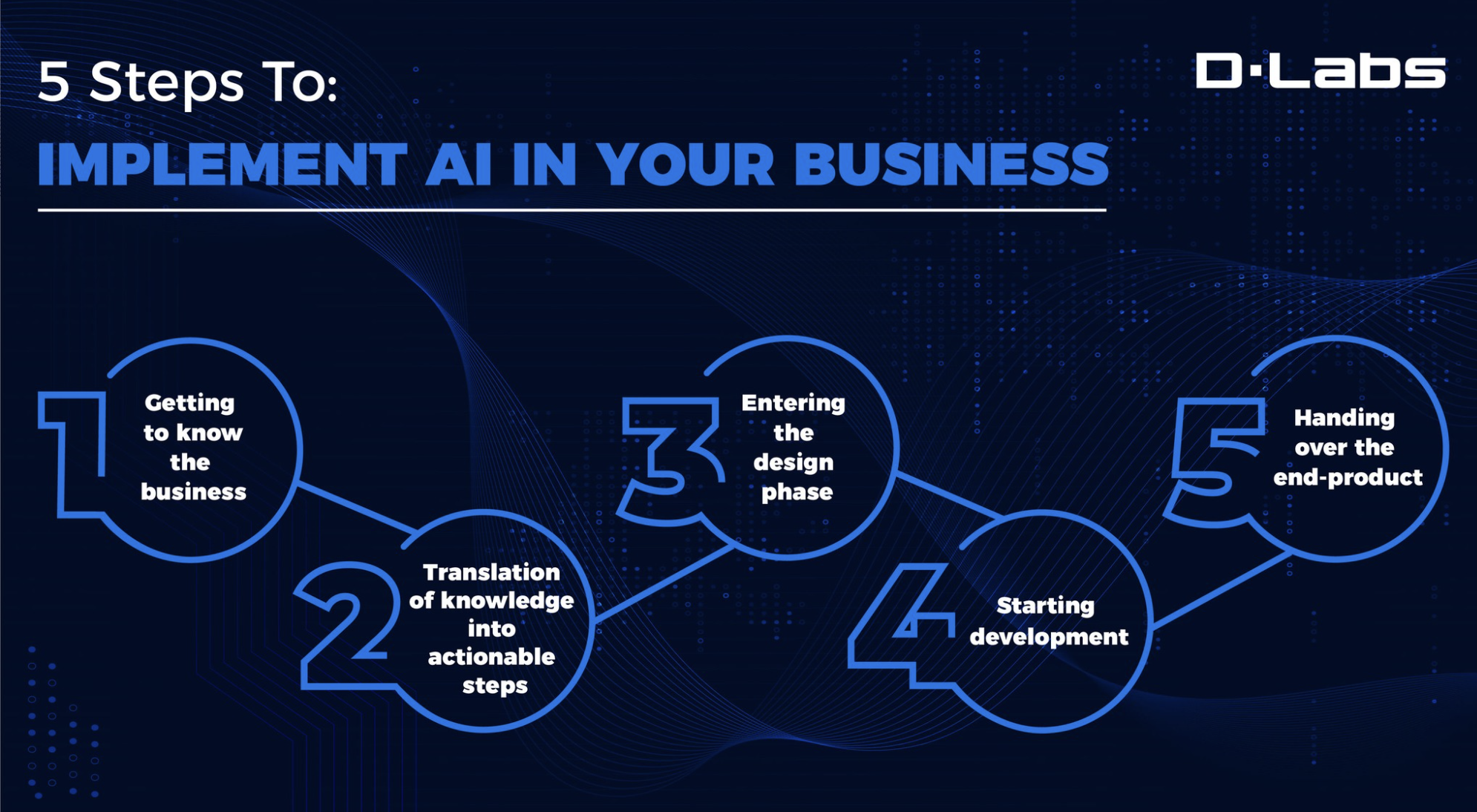Artificial intelligence is taking over the business world. McKinsey’s ‘The state of AI in 2020’ report estimates that 50% of companies already use AI in at least one function.
And that only scratches the surface of what’s to come. Forecasts suggest that the revenues generated by artificial intelligence will double between 2020 and 2024, signaling how many businesses will harness the technology in the name of growth.
That said, companies still struggle to adopt AI — and today, we’ll share the ten challenges we hear about the most.
Let’s dive in.
10 Challenges to AI Adoption
If you’re considering using AI in your company, it can pay to be aware of the obstacles you might face. That way, you can smooth the path to AI adoption.
These are the most common challenges out there.
1. Your company doesn’t understand the need for AI
Inertia is a powerful force. After all, if a company is doing well, teams often feel reluctant to take a risk by making a significant change.
And adopting new technology, like artificial intelligence, will feel like a major shift. Next up, there’s the challenge of convincing stakeholders to invest in a solution for which the returns can be somewhat unclear.
Because, where AI is concerned, you won’t always know what you’re building until you’ve made a start, which is another tricky obstacle to overcome.
2. Your company lacks the appropriate data
The only way to build and train effective AI is with a sufficient amount of high-quality data. And the better the data, the better the outcomes.
But a lack of stakeholder buy-in can cause companies to underinvest in the data management systems required to enable AI, leaving them unable to train an algorithm on how to solve their business problems accurately.
That said — if your company uses a CRM tool to collect customer demographics, purchase behavior, or on-site interactions, you may have a data set you can use. And where there are gaps, online data libraries, even synthetic data, can often fill them.
But if your company isn’t interested in AI in principle, then you won’t know what data you need, let alone how to structure it.
3. Your company lacks the skill sets
Data is only half the equation. You need the right skill sets to make AI work.
Yet many companies struggle to hire data and machine learning specialists, leaving them unable to take ambitions further.
And even where companies have a degree of in-house expertise, a lack of experience in the right fields can hinder progress; it can even affect hiring, as departments won’t know which roles to fill or how to assess candidates.
In some circumstances, heads of departments are simply underqualified to lead an AI implementation, resulting in inefficient processes, integration issues, or ongoing manual work that undermines the solution’s value.
4. Your company struggles to find good vendors to work with
Despite its growth, AI adoption in most businesses remains modest.
One reason for this is many organizations have worked with AI agencies that don’t truly understand how to use the technology to deliver business value.
As a result, many companies have had negative experiences when dipping their toes in AI development, making them reluctant to dive in. Whereas had they worked with reputable and experienced AI vendors at the outset, the results would speak for themselves.
Better still, had the vendors offered to tackle a small business problem first, proving the value of AI, the stakeholders would have found it easier to embrace more ambitious plans later on.
5. Your company can’t find an appropriate use case
Some organizations think that by implementing AI just for the sake of it, they will encourage company-wide adoption.
Sadly, this strategy often has the opposite effect.
When a company doesn’t have a solid use case, it’ll struggle to create a solution that delivers business value. As a result, there’ll be no way to prove that artificial intelligence can solve everyday challenges.
In all likelihood, the strategy will only reinforce the indifference felt towards the technology, so it’s best to delay adopting AI until you know how you’ll use it.
6. An AI team fails to explain how a solution works
In our experience, people will only trust a computer model if they understand how it works. And if an AI team can’t offer an explanation, implementations can end there.
The challenge only grows in situations where a model’s output contradicts a stakeholder’s thinking — because stakeholders always want to know why a decision is wrong (and why they should consider changing their mind).
Let’s put this in a medical context for clarity. Suppose a doctor diagnoses a patient, only for an algorithm to disagree.
The doctor will need to know the logic behind the machine’s thinking before they can sign off on the alternate diagnosis (say, by seeing that a model used symptoms like sneezing and headaches to diagnose flu, not characteristics like a patient’s age or weight).
But offering transparency isn’t always simple as ‘black box’ models often spit out a prediction without a rationale.
Leaving stakeholders without a way to validate the output.
7. Different AI teams fail to work as a unit
In large companies, AI teams often end up working in silos, meaning that while they use the same technologies, they do so in isolation.
As a result, they build different infrastructures and adopt different workflows, which only complicates broader AI adoption. You can avoid this by using a ‘hub-and-spoke’ structure, whereby one central unit aligns all teams around a standardized approach.
That way, any investment in AI benefits the whole organization and brings economies of scale as you roll solutions out.
8. Management fears having to overhaul legacy systems
It’s astonishing how many organizations still rely on outdated infrastructure, applications, and devices to power their IT operations. And management often chooses not to adopt AI for fear of the costs of upgrading these systems.
But the truth is: cloud computing means you can deploy AI without overhauling an antiquated IT network, using ‘Data Lake’ functions in hybrid environments. Doing so might require your company to have an operational framework on-premises.
But you still get to benefit from more effective, AI-driven operations.
9. Some solutions are just too complex to integrate
Even if you manage to design a ground-breaking AI solution, there’s no guarantee your company will adopt it.
That’s something Netflix discovered, at a great cost, in 2009.
The streaming giant offered a one-million-dollar prize to any developer that could increase the accuracy of its recommendation engine. And while one team managed to optimize it by some 10%, Netflix never integrated the upgrade. Why so?
They said it required too much engineering effort, and so: complexity meant the solution never saw the light of day.
10. Regulation often proves the biggest hurdle of all
Suppose you want to build a cloud-based banking platform in Poland: owing to regulations, that would only be possible if your data centers are in Poland too.
Many AI projects face requirements like these. And in industries like finance, they often halt solutions in their tracks. The same can be said of the question of accountability — that is, of who should take responsibility when AI makes a mistake.
Let’s return to the medical context for an example.
Suppose a doctor changes their diagnosis based on a machine’s recommendation, only for the machine to be wrong. Is the practitioner to blame? Or is it down to the algorithm’s developer?
These are ethical questions that regulators are yet to answer. Then, there’s the question of data management.
When you build an AI solution, you need to collect vast quantities of data and, whether that data is sensitive or not, you need to keep it adequately secure. Fail to do so, and regulations mean your company could face a significant fine.
Therein lies a risk that many organizations would rather not take.
No challenge is too great
While the challenges to AI adoption are many, you should have every confidence that you can implement artificial intelligence in your company.
Truth be told: an awareness of the pitfalls is a crucial first step.
After all, if you know the obstacles you might face, you’ll be all the more prepared to design a strategy that maximizes your chances of success. There’s no hiding that successful AI adoption relies on investment, stakeholder support, and robust workflows.
But the potential benefits are huge, and no challenge is too great to overcome.
If you’re considering adopting AI, why not make life easier on yourself.
Read our free eBook on ‘How to use AI in your company’ and feel fully prepared for the path ahead.







